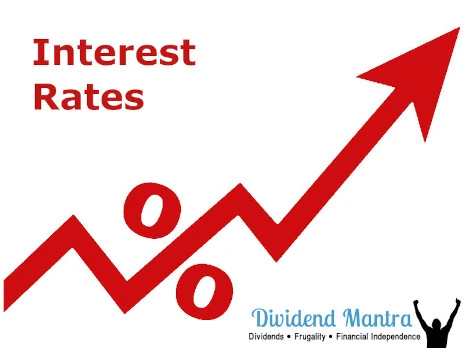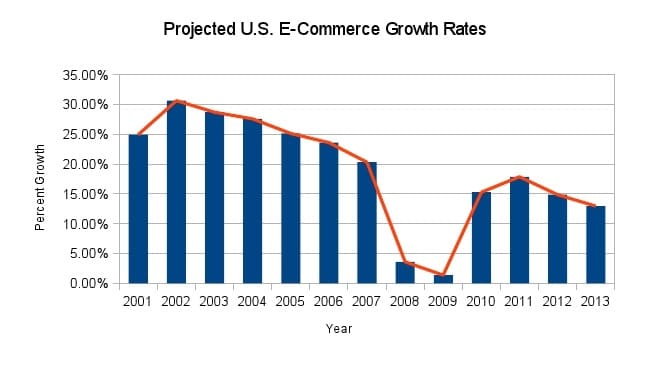How the Upcoming Rise in Interest Rates Will Affect Your Stock Portfolio and How You Can Prepare
Earlier than predicted, the Federal Reserve intends to raise interest rates (the Federal Funds rate). It’s happening fast on Wall Street: the Nasdaq 100 is already in correction mode. A hike in interest rates is likely to have some impact on the stock market.
As a result of this monetary strategy, asset prices were given a significant boost. Bond secondary market prices rose as lower interest rate bonds could be issued (and thus lower current yields).
S&P 500 in 2022 outperformed the S&P 500 in 2020 and 2021 because of historically low bond yields and significant fiscal stimulus, which pushed investors into riskier assets like equities.
Investors will reevaluate the equity risk premium if an alternative to stocks becomes available once more in terms of yield. Values of soaring stocks have been reduced. Investors in the primary market gain larger coupons on fresh offerings of bonds because of rising interest rate expectations. Price pressure is exerted on the secondary market for bonds that pay lower interest rates. Bond yields are rising as a result of this. The economic outlook and interest rates are covered in greater detail in this article.
When interest rates rise, what happens to the stock market?
Historically, rising interest rates have been beneficial to the stock market as a whole. Again, the message is that the rate of economic expansion will be slowed, but not halted. Companies can benefit greatly from a strong economy.
An examination by J.P. Morgan found that the S&P 500 and 10-year treasury bond moved in tandem from February 2009 to 2019 to 3.5 percent before the two started divergence. A rise in interest rates can help the entire stock market, but only to a certain extent. The 10-year treasury rate was 1.75 percent on January 21st, 2022.
It’s crucial to remember that in any market or economic situation, there are a variety of interconnected stories at work. There is nothing new here. The broad markets can also smooth out the underlying volatility in some sectors (hence diversification), while other tendencies, like the run up in post-Covid prices, are more widespread. As interest rates climb, here are some stock market patterns to keep an eye on.
Valuations
For the reasons already mentioned, valuations have been overvalued by most metrics for some time. The S&P 500’s forward price-to-earnings ratio is expected to be 20x, which is one standard deviation above the long-term average of 16.8x. Despite a recent dip in the forward P/E ratio, a J.P. Morgan analysis shows that current valuations still project yearly returns that are almost flat over the next five years.
An asset bubble can’t form if the market’s correctional functions aren’t functioning properly. All of this is taking place right now. It’s long overdue. According to the S&P 500’s 2021 forecast, the stock market’s largest loss would be 5.1 percent. Intra-year price drops have averaged 14% since 1980. Instead, in 2021, the index reached a record-breaking 70 new highs.
Investors didn’t have to sit on the sidelines in 2021, despite this. Investing at all-time highs may not feel nice, but it has historically yielded higher returns than other investment opportunities. No one can deny that the S&P 500 returned about 29% with dividends reinvested in 2013. Investing can be done in a number of different ways.
Value vs. growth
Overall, the market behaves considerably differently from what might be seen in a particular stock or industry area. With interest rates on the rise, it makes sense to pull money out of growth equities this year. In the stock market, a company that trades at a greater price-to-earnings multiple than its peers, most notably value, is considered a growth stock. If investors believe that the company will continue to grow at an above-average rate, they may be ready to tolerate greater valuations now. It’s common for growth stocks to not pay dividends and possibly fail to make a profit at all.
For this reason, rising interest rates can cause a reduction in investor demand since future growth is discounted to the present value and so less valuable.
Establishment and dividend-paying companies including financials, discretionary consumer goods, and energy make up value stocks. While growth companies have higher P/E ratios, they are less sensitive to changes in the economy and interest rates here in the United States than value equities (10-year treasury bills).
Growth is down -12.3% while value is only down -3.6 percent for the year.
¹ Value has outperformed growth over the course of history, but in the recent decade, growth has surpassed value on an annual basis. It doesn’t matter if this recent rotation will endure or not; it shows the value of having both in your portfolio.
Diversification
Diversification is necessary since no one can predict when, how long, or to what extent certain sectors, styles, or variables will outperform or underperform in a broad-based market environment. There’s a considerable probability that some element of your portfolio may underperform if you have a varied mix of asset classes, factors, styles, and geographic locations. We understand and accept this fact.
As a result of diversification, your portfolio is less likely to lose value during a downturn than if it were concentrated. The trade-off is that if one sector of the market happens to be outperforming, a diversified asset mix is less likely to outperform a concentrated wager.
It’s not a one-size-fits-all solution. The global financial markets have become even more linked as correlations between asset classes shift. You can still take advantage of long-term investment opportunities, however.
Consider, for example, the advantages of adding bonds to your portfolio, which can provide both income and stability (total return). Only four years since 1981 have U.S. aggregate bonds returned negative total returns.
Consider stocks outside of the United States as well. Because valuations abroad aren’t nearly as high as they are in the United States, yields there are also greater than in the United States. About 45% of the time over the previous two decades, international stocks (MSCI EAFE) have beaten US stocks (S&P 500) on an annual basis, but the US has done much better on a cumulative basis throughout that time span. However, other asset rotations have rewarded non-Americans.
A long-term investor with a diverse portfolio will most likely make a bad decision if they decide to cash out. Don’t wait for your portfolio to be rebalanced by market volatility. But just because markets generally rise, it doesn’t follow that every stock in them would, too.






